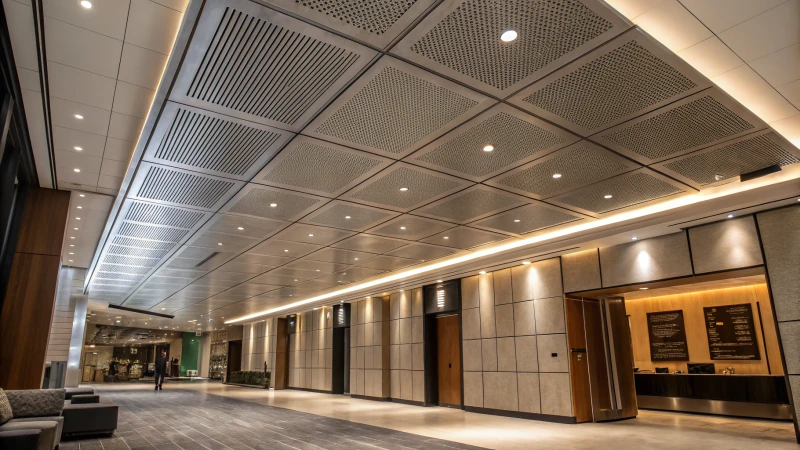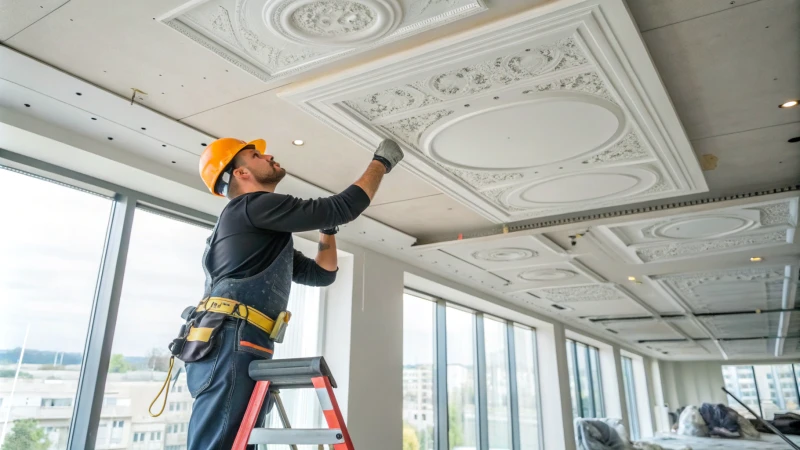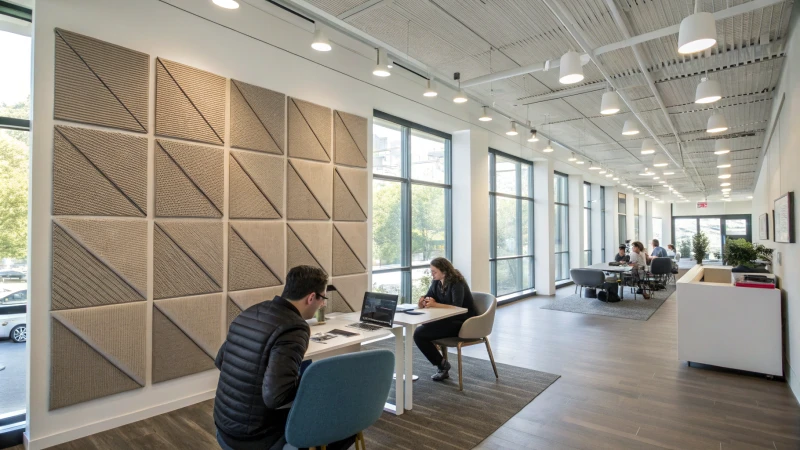Why Ceilings Plus Price so Expensive?

Are you wondering why Ceilings Plus products come with a hefty price tag?
Ceilings Plus products are priced higher due to their use of superior materials, customization capabilities, advanced manufacturing technologies, and exceptional acoustic performance. This blog delves into the key factors that contribute to their premium pricing, providing you with insights for informed decision-making.
In this comprehensive analysis, we will break down the various elements that influence the cost of Ceilings Plus products and what that means for your upcoming projects. Let’s dive deeper into each factor to understand the true value behind these premium ceiling solutions.
Ceilings Plus uses inferior materials in their products.False
This claim is false; Ceilings Plus utilizes superior materials, contributing to higher costs.
Customization increases the price of Ceilings Plus products.True
This claim is true; customization capabilities are a key factor in their premium pricing.
What Materials Make Ceilings Plus Products Stand Out?
Discover the unique materials that make Ceilings Plus products stand out in the ceiling solutions market. Explore their premium offerings and what sets them apart from the competition.
Ceilings Plus products stand out due to their use of high-grade materials like aluminum and stainless steel, customizable options, advanced acoustic features, and innovative manufacturing techniques, making them ideal for high-performance commercial spaces.

Premium Materials Used in Ceilings Plus Products
Ceilings Plus utilizes a selection of top-notch materials that set their products apart from competitors. The core materials include:
| Material Type | Benefits |
|---|---|
| High-Grade Aluminum | Lightweight, corrosion-resistant, and highly durable. |
| Stainless Steel | Offers strength and aesthetic appeal, resistant to rust. |
| Specialized Coatings | Enhances durability and resistance to wear and tear. |
These materials contribute significantly to the overall longevity and performance of their ceiling systems, making them suitable for demanding environments like healthcare facilities and corporate offices.
Customization Options
Ceilings Plus prides itself on customization capabilities, allowing clients to tailor designs according to specific needs. Here are some examples of what can be customized:
- Panel Sizes: Tailored to fit any space, ensuring a perfect fit.
- Unique Finishes: Available in various colors and textures to match any design aesthetic.
- Grid Systems: Custom grid layouts can be designed for unique architectural features.
These options not only enhance visual appeal but also ensure that the product serves its intended purpose effectively, aligning with modern design trends1.
Acoustic Performance
One of the standout features of Ceilings Plus products is their emphasis on acoustic performance. Many products incorporate advanced sound control technologies that provide:
- Noise Reduction: Ideal for open office environments or crowded public spaces.
- Soundproofing: Reduces external noise interference, crucial for spaces like schools and hospitals.
The integration of acoustic properties2 within their designs is not just about comfort; it significantly enhances productivity and well-being in various environments.
Advanced Manufacturing Techniques
The manufacturing process of Ceilings Plus products employs cutting-edge technology that ensures high standards of quality:
- Precision Engineering: Ensures accuracy and uniformity in product dimensions.
- Automated Systems: Enhances efficiency and reduces human error in production.
This commitment to quality means that their ceilings not only look great but also perform reliably over time, making them a trusted choice for projects with strict performance requirements.
Sustainability Considerations
In today’s world, sustainability is key. Ceilings Plus incorporates eco-friendly practices in their product development:
- Use of sustainable materials that comply with environmental standards.
- Designs that improve energy efficiency in buildings.
By prioritizing sustainability, they cater to a growing market of environmentally conscious consumers who are looking for green building solutions3.
Ceilings Plus uses high-grade aluminum for durability.True
High-grade aluminum is lightweight, corrosion-resistant, and highly durable, enhancing the longevity of Ceilings Plus products.
All Ceilings Plus products are customizable.True
Ceilings Plus offers customization options for panel sizes, finishes, and grid systems to meet specific client needs.
How Does Customization Affect Ceiling Installation Costs?
Customization in ceiling installation can significantly influence overall costs. Understanding these impacts is essential for budgeting your project effectively.
Customization affects ceiling installation costs through material selection, design complexity, and labor expenses. Unique designs often require premium materials and skilled labor, increasing overall project costs but potentially enhancing long-term value.

Understanding the Impact of Customization on Costs
Customization in ceiling installation can significantly affect overall expenses. The degree of customization directly correlates with material selection, design complexity, and labor requirements. Custom solutions can enhance aesthetics and functionality but often come at a premium.
Material Costs
Different materials have varying costs associated with them. For instance, high-grade aluminum and specialized coatings, often used for customized ceilings, increase initial costs. Here’s a comparative look at common materials:
| Material Type | Cost per Square Foot | Durability Rating |
|---|---|---|
| Standard Drywall | $1.50 | Moderate |
| Aluminum Panels | $5.00 | High |
| Acoustic Tiles | $2.50 | Moderate to High |
| Custom Coatings | $4.00 | High |
Custom materials not only add to the initial costs but also impact maintenance and longevity, leading to potential savings in the long run.
Design Complexity
The more intricate the design, the higher the installation cost. Custom shapes, unique panel sizes, or integrated lighting systems require skilled labor and advanced installation techniques. This complexity can be broken down into:
- Simple Design: Basic panels requiring minimal cuts.
- Moderate Design: Custom sizes and standard fixtures.
- Complex Design: Tailored elements with integrated technology.
| Design Complexity | Installation Cost Increase (%) |
|---|---|
| Simple | 0% |
| Moderate | 15% |
| Complex | 30% |
These percentages illustrate how design intricacy can elevate labor costs significantly.
Labor Costs
Labor costs can also spike based on the customization level. Skilled tradespeople with experience in installing custom ceilings command higher wages. Factors affecting labor include:
- Experience Level: More experienced workers are often more expensive but can reduce time on the job.
- Project Timeline: Tight deadlines may require additional laborers to meet completion dates, thus increasing costs.
- Location: Urban areas tend to have higher labor costs than rural areas.
Additional Considerations
Other cost factors to consider when customizing ceiling installations include:
- Acoustic Performance: Custom ceilings designed for sound control may require specialized materials, increasing costs.
- Building Codes Compliance: Custom solutions need to adhere to local building codes, possibly requiring additional investment in compliant materials or design adjustments.
- Long-Term Value: While customization may raise upfront costs, factors like durability and aesthetic appeal can enhance property value over time. For example, choosing high-performance ceilings could lead to lower energy costs due to better insulation properties.
For further insights into managing your custom ceiling project efficiently, explore effective cost management strategies4.
Customization increases ceiling installation costs significantly.True
Custom designs and materials raise initial expenses due to complexity and skilled labor requirements, impacting overall project costs.
Standard drywall is the most cost-effective ceiling material.True
At $1.50 per square foot, standard drywall offers a lower cost option compared to custom materials like aluminum or acoustic tiles.
What Role Does Technology Play in Pricing?
In today’s fast-paced market, technology plays a vital role in shaping pricing strategies. Understanding how technology impacts pricing can empower businesses to enhance profitability and customer satisfaction.
Technology significantly influences pricing strategies through dynamic pricing, optimization tools, market research automation, and advanced customer segmentation. By leveraging these innovations, companies can adapt quickly to market changes and improve profitability.

Technology and Dynamic Pricing
Dynamic pricing, often referred to as surge pricing or time-based pricing, utilizes algorithms and data analytics to adjust prices in real-time based on demand, supply, and other factors. Companies like airlines and ride-sharing services frequently employ this technique.
-
Algorithms: These are programmed to analyze vast amounts of data to identify patterns and predict customer behavior. By using big data analytics5, businesses can fine-tune their pricing strategies to maximize revenue.
-
Market Responsiveness: This approach allows companies to remain competitive by reacting quickly to market changes, ensuring they capture consumer interest at optimal price points.
Technology for Price Optimization
Price optimization tools leverage machine learning and AI to determine the best pricing strategy. By analyzing historical sales data, competitor pricing, and market trends, these tools help businesses set prices that increase sales while maximizing profit margins.
| Factors Analyzed | Impact on Pricing |
|---|---|
| Historical Sales | Helps predict future demand patterns |
| Competitor Pricing | Ensures competitive edge in the market |
| Consumer Behavior | Adjusts prices based on consumer preferences |
Using these insights, businesses can implement strategies that lead to better profitability and customer satisfaction. For more in-depth analysis, check out our article on price optimization tools6.
The Role of Technology in Market Research
Technology plays a crucial role in gathering market intelligence that informs pricing strategies. Through surveys, focus groups, and social media analytics, businesses gain insights into customer needs and preferences. This data can significantly influence pricing decisions.
-
Surveys and Feedback: Tools like SurveyMonkey allow companies to gather direct feedback from consumers about their pricing perceptions and willingness to pay. Incorporating this feedback can lead to more accurate pricing strategies.
-
Social Media Insights: Platforms like Facebook and Twitter provide a wealth of data about consumer sentiment and trends. By analyzing this data, companies can adjust their pricing to align with current consumer interests.
Automation in Pricing Decisions
Automation technologies enable businesses to streamline their pricing processes, making them faster and more efficient. With the help of automated systems, companies can apply complex pricing models without the need for manual intervention.
-
Pricing Engines: These systems automatically adjust prices based on preset criteria like inventory levels or competitor actions. This reduces the workload on pricing teams and minimizes human error.
-
Real-Time Updates: Automated pricing solutions can update prices across multiple sales channels simultaneously, ensuring consistency and compliance with overall pricing strategies. For a deeper understanding of automation in pricing, visit our guide on automated pricing strategies7.
Technology-Driven Customer Segmentation
Advancements in technology allow businesses to segment their customers more effectively based on various criteria such as demographics, purchasing behavior, and preferences. This segmentation enables tailored pricing strategies that cater to different customer segments.
-
Personalized Pricing: By utilizing customer data from CRM systems, companies can create personalized pricing models that enhance customer loyalty and increase conversion rates.
-
Segment-Specific Promotions: Targeted promotions can be implemented for specific segments, increasing the likelihood of purchases while maintaining brand value.
This approach not only boosts sales but also fosters a better customer relationship by acknowledging individual customer needs.
Dynamic pricing adjusts prices based on real-time demand.True
Dynamic pricing uses algorithms to modify prices instantly according to market demand, ensuring businesses maximize revenue opportunities.
Automation eliminates the need for manual pricing decisions.True
Automation in pricing processes allows businesses to apply complex models without human intervention, streamlining operations and reducing errors.
Are the Acoustic Benefits Worth the Extra Cost?
Exploring the cost-effectiveness of acoustic treatments reveals a complex landscape of benefits versus expenses. Are these enhancements truly worth their price tags?
Investing in acoustic treatments often entails higher initial costs but can yield significant long-term benefits such as improved sound quality, reduced noise levels, and enhanced productivity in various environments.

Understanding Acoustic Benefits
Acoustic treatments, such as specialized ceiling systems, can significantly enhance sound quality and reduce noise levels in various environments. This improvement is particularly crucial in commercial settings like offices, schools, and healthcare facilities where noise can disrupt communication and concentration.
For example, implementing acoustic panels can lower the reverberation time in a room, making conversations clearer and reducing overall sound interference. The investment in these treatments may seem steep initially, but the potential benefits could justify the extra cost.
Key Factors Influencing Costs
The costs associated with acoustic treatments often stem from several factors, including:
| Factor | Description | Impact on Cost |
|---|---|---|
| Material Quality | Higher quality materials tend to offer better sound absorption properties. | Increases with premium options |
| Customization | Tailored designs to fit specific acoustic needs can escalate pricing. | Higher for bespoke solutions |
| Installation Complexity | More complex systems may require professional installation, adding to expenses. | Installation fees apply |
| Long-Term Durability | Durable systems may have a higher upfront cost but lower maintenance over time. | Balances out over time |
Investing in a system that utilizes advanced materials and manufacturing techniques, like those offered by Ceilings Plus, can result in substantial long-term savings despite the initial expense.
Evaluating Cost-Effectiveness
When evaluating whether the acoustic benefits are worth the extra cost, consider the following:
- Noise Reduction Needs: Identify specific areas where noise is a concern. This could include open-plan offices or areas near busy streets. Assessing the required level of soundproofing will help in determining the value of different solutions.
- Long-Term Impact on Productivity: Studies show that environments with controlled acoustics lead to improved focus and productivity. If an organization can boost performance through better sound management, this should factor into the cost analysis.
- Potential Health Benefits: Reduced noise levels can lead to decreased stress and enhanced wellbeing among occupants. The health benefits associated with improved acoustics may justify the financial investment.
User Experiences and Recommendations
According to reviews and user experiences on platforms like Reddit8, many individuals who invested in acoustic treatments reported noticeable improvements in their environments. Users noted aspects such as:
- Enhanced privacy in shared workspaces.
- Improved audio quality for presentations and meetings.
- Increased comfort levels in living spaces due to reduced external noise.
These testimonials indicate that while the upfront costs can be substantial, the resulting benefits often outweigh these initial investments.
Conclusion of Insights
The decision to invest in acoustic treatments should be based on individual needs and circumstances. By weighing the initial costs against potential long-term benefits, including enhanced productivity, health benefits, and overall satisfaction with a quieter environment, one can make an informed choice about whether the acoustic benefits are worth the extra cost.
Acoustic treatments significantly improve sound quality.True
Investing in acoustic panels enhances clarity and reduces noise, especially in commercial spaces, justifying their cost.
Higher quality materials increase acoustic treatment costs.True
Premium materials provide better sound absorption but come at a higher price, affecting overall expenses for installations.
How Does Brand Reputation Influence Product Pricing?
Brand reputation significantly influences product pricing by affecting consumer perceptions of value and quality. Understanding this relationship is essential for businesses looking to optimize their pricing strategies.
Brand reputation impacts product pricing by enhancing perceived value and quality. Strong reputations allow companies to charge premium prices, reflecting consumer trust and loyalty towards the brand.

The Power of Brand Reputation
Brand reputation plays a crucial role in consumer decision-making, particularly when it comes to pricing. A strong reputation can lead to higher perceived value, allowing companies to set prices that reflect their quality and reliability. For example, brands like Apple9 and Mercedes-Benz leverage their reputations to justify premium pricing.
Building Trust Through Quality
When consumers associate a brand with high-quality products, they are often willing to pay more. This trust is built over time through consistent product performance and positive experiences. Brands that prioritize customer satisfaction, such as Zappos, can command higher prices because their reputation reflects reliability and excellence.
Impact on Consumer Perception
The perception of value is subjective and heavily influenced by brand reputation. When consumers see a brand as prestigious or elite, they are likely to perceive its products as more valuable, irrespective of the actual cost of production. Consider how luxury brands like Chanel maintain their high pricing despite similar products being available at lower costs.
| Brand | Product Category | Price Range |
|---|---|---|
| Apple | Electronics | $999 – $1,999 |
| Mercedes-Benz | Automobiles | $35,000 – $250,000 |
| Chanel | Fashion Accessories | $500 – $10,000 |
The Role of Marketing Strategies
Effective marketing strategies amplify the influence of brand reputation on pricing. Companies often invest heavily in branding campaigns that highlight their unique selling propositions (USPs), which can further justify higher prices. For instance, Nike uses celebrity endorsements to enhance its brand image, thereby increasing its pricing power.
Competition and Market Positioning
In competitive markets, a strong brand reputation can create a significant barrier to entry for new entrants. Established brands can maintain higher prices due to their loyal customer base and market presence. As new competitors emerge, they may struggle to gain traction without an established reputation, leading them to lower prices to attract consumers.
The Psychological Pricing Effect
Brand reputation also plays a psychological role in pricing. Consumers often associate higher prices with better quality. This phenomenon is evident in various sectors, including fashion and electronics, where premium pricing can enhance perceived quality. Brands like Rolex exemplify this effect, where their high prices reinforce their image as luxury timepieces.
Conclusion: The Future of Pricing Strategies
As markets evolve, companies must continually adapt their pricing strategies while maintaining their brand reputation. Innovative approaches that leverage reputation can lead to sustained profitability and consumer loyalty. To explore more about effective branding strategies and their impact on pricing, consider researching further into case studies of successful brands.
Strong brand reputation allows for premium pricing.True
Companies with a strong reputation can charge higher prices due to increased perceived value and consumer trust.
Lower prices always indicate lower quality products.False
Consumers often associate higher prices with better quality, but this isn't always true; perception varies based on brand reputation.
Conclusion
Ceilings Plus products command premium prices due to high-quality materials, extensive customization, advanced technology, and superior acoustic performance, ensuring durability and value in commercial applications.
-
Explore how advanced materials enhance ceiling design and functionality for modern spaces. ↩
-
Learn about sustainable practices in ceiling manufacturing and how they benefit your projects. ↩
-
Find out how acoustic features in ceiling designs improve workplace productivity. ↩
-
Discover how different customization options can impact your ceiling installation budget and find ways to manage costs effectively. ↩
-
Clicking this link will provide you with essential insights into how technology influences modern pricing strategies, helping you adapt to contemporary market practices. ↩
-
Explore this resource for a deeper dive into price optimization tools and learn how they can enhance your pricing models effectively. ↩
-
This guide will give you a comprehensive overview of automated pricing strategies that can streamline your business operations. ↩
-
Discover insights on whether investing in acoustic treatments is worth it for your space. These resources provide valuable information on user experiences and effective solutions. ↩
-
Clicking this link will provide deeper insights into how brand reputation directly impacts pricing strategies in various industries. ↩



